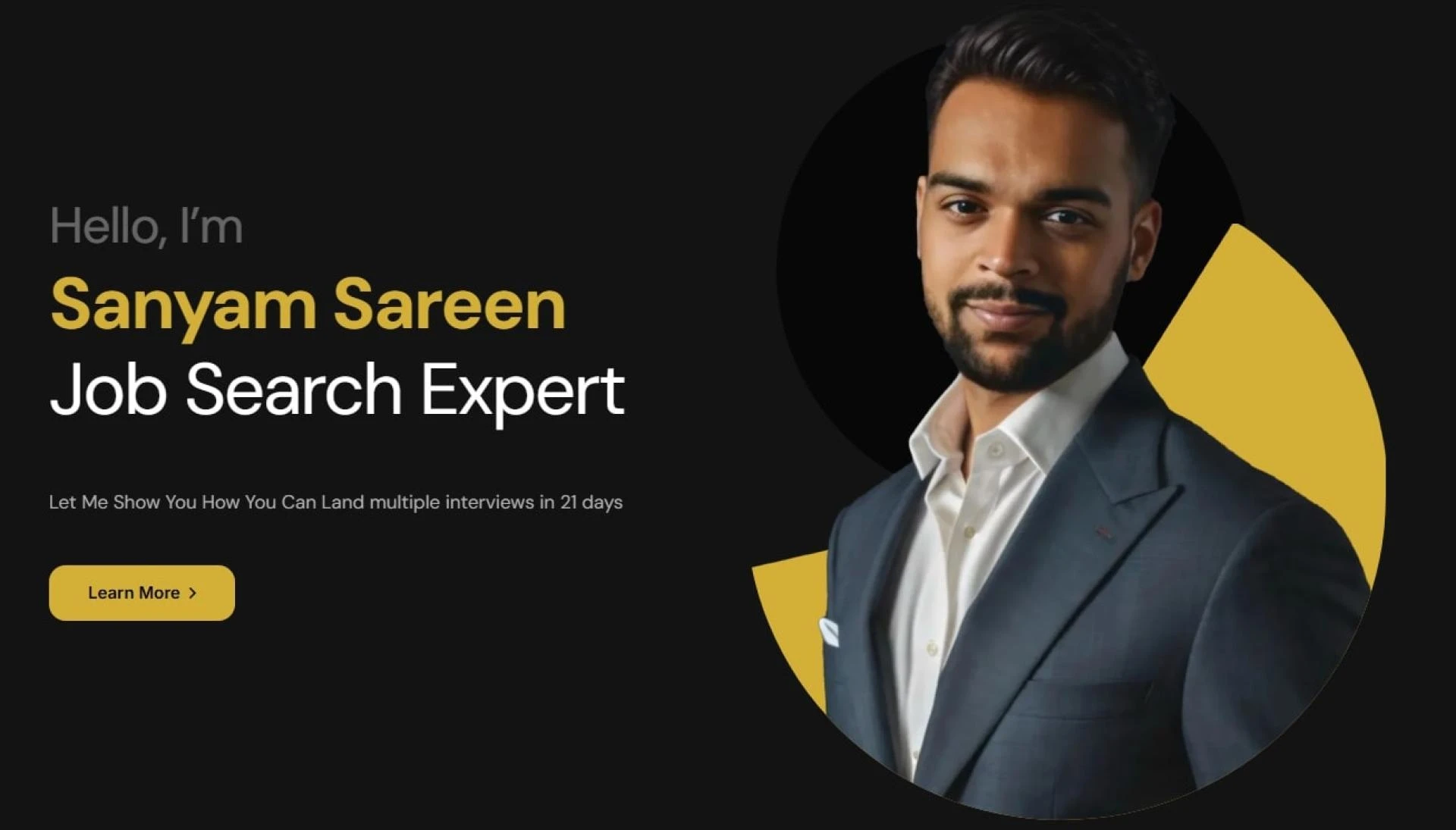For years, LinkedIn felt like a quiet, slightly boring networking site where people updated their job titles every time they switched companies. But the platform has changed. Today, it’s the world’s most active hiring ecosystem, and almost every recruiter’s first stop when they’re trying to understand who a candidate really is. Yet, despite this shift, most professionals still treat their profiles like an online résumé that only needs a quick update once in a while.
Sanyam Sareen, a career coach who has reviewed thousands of profiles, often says that a strong LinkedIn presence “doesn’t start with posting, it starts with being discoverable.” And that single idea has turned into a framework he now teaches across workshops and career coaching programs. The aim isn’t to become an influencer or post every single day. It’s to make sure recruiters can find you, understand your strengths, and see why you’re worth calling.
Here’s a closer look at how he helps candidates build profiles that quietly, consistently attract the right kind of attention.

1. Start with the one line that decides 80% of your visibility: the headline
Most people write their headline as if it’s a formality: “Software Engineer at XYZ.”
But Sanyam’s first rule is simple, the headline is not a label. It is a positioning tool.
When he works with clients, he asks them two questions:
- What role are you targeting next?
- What skills define you better than your job title?
If someone says they’re a “Project Manager,” that tells recruiters nothing about the kind of work they excel at. But a headline like:
Project Manager | Agile Delivery | Cross-Functional Leadership | Client Success
immediately gives direction. Suddenly the recruiter sees structure. The candidate becomes easier to understand. And when the platform’s search algorithm scans profiles, these keywords create new visibility opportunities.
Small change. Big impact.
2. Build a summary that sounds like a human, not a catalogue of achievements
If there is one section almost everyone gets wrong, it’s the About/Summary section. Most summaries read like stiff elevator pitches. Some look like long paragraphs stuffed with keywords. Others are so vague that you can’t figure out what the person even does.
Sanyam tells his clients to write their summary as if they are answering a simple question:
“If someone met you for 30 seconds, how would you want them to remember you?”
The trick is mixing storytelling with clarity. Something like:
“I build marketing systems that help companies grow without chaos. Over the last 6 years, I’ve led campaigns across SaaS, retail, and mobility, improving conversions, building teams, and simplifying the messy parts of marketing ops.”
This feels personal. It flows naturally. It reads like a real person wrote it. Recruiters respond to this tone because they’re reading dozens of profiles that sound robotic. A human voice stands out.

3. Use experience descriptions to show impact, not responsibilities
A common mistake Sanyam sees is candidates copying job descriptions into their Experience section. Hiring managers already know what a “Business Analyst” or “Account Manager” does. What they want to know is how well you did it.
Instead of writing:
- Managed client accounts
- Conducted analysis
- Coordinated with stakeholders
He pushes clients to highlight the outcome:
- Improved client retention from 72% to 88% within one year
- Reduced reporting time by 40% by redesigning the data workflow
- Supported a $1.2M project through cross-functional coordination
These examples turn a passive profile into an active, compelling one. Recruiters look for impact because it gives them proof, not just claims.
4. Make skills and endorsements work for you, not against you
Most professionals don’t realize that LinkedIn skills influence search rankings. And yet, they either list too many or list vague ones like “Leadership” or “Communication.”
Sanyam’s method is to curate, not collect.
He advises clients to:
- Choose skills relevant to the roles they want
- Place the most important ones at the top
- Make sure these skills match the job descriptions they are targeting
If a candidate is aiming for a data analyst role but their top skills are “Sales Strategy” and “CRM Management,” they’re accidentally misdirecting recruiters.
Skills should reflect the future, not the past.
5. Add activity, even small bursts, to signal that you’re “alive” on the platform
One thing Sanyam emphasizes repeatedly is this: You don’t need to be viral to be visible.
Most candidates avoid posting on LinkedIn because they feel they have nothing unique to say. But hiring teams don’t expect you to be an influencer. They simply want to know you participate. Even small actions work:
- Leaving thoughtful comments
- Sharing insights from an article you read
- Posting a short learning from your job
- Engaging with industry updates
The platform rewards activity. And when you stay active, your profile reaches people without you doing anything extraordinary. Sanyam often jokes that “LinkedIn shows your profile more when it knows you’re not dead.”
A few minutes a week can completely shift your reach.
6. Use the Featured section as your personal credibility shelf
This is one of the most underused sections, but it has huge impact when done right.
Sanyam encourages clients to add:
- Resume (optional but useful for visibility)
- Portfolio samples
- A case study
- An article they wrote
- A featured project
- Certifications or media mentions
Think of it as a display window. When a recruiter lands on your profile, this section acts like a quick highlight reel, a snapshot of your best work.
7. Optimize for recruiters, not friends
Sometimes people hesitate to update their LinkedIn because they worry coworkers or friends will notice. But Sanyam reminds them of something important: your future employer matters more than the people scrolling casually through their feed.
Good candidates hold themselves back out of fear of being judged. But when you look at profiles that consistently get recruiter attention, there’s a pattern, they’re bold, clear, and intentional.
You don’t need to brag. You just need to show your value without apologizing for it.
8. Consistency beats perfection
The biggest misconception about LinkedIn optimization is that you need to fix everything in one day. But the profiles that grow best evolve gradually. Small updates. Better descriptions. A new skill. A few posts here and there.

Sanyam’s coaching method works because it’s built on consistency, not pressure. Clients who follow his approach don’t just get more profile views. They receive better messages from recruiters, build stronger networks, and eventually find roles that match their strengths, not random openings.
Final Thoughts
LinkedIn is no longer optional. It shapes first impressions before you ever speak to a company. But building a strong profile doesn’t mean becoming someone you’re not. It means presenting your skills with clarity and confidence so recruiters instantly understand your value.
With the right headline, thoughtful summary, impact-driven experience, and a bit of consistent activity, your profile stops being just a page, it becomes a magnet for the right kind of opportunities.
And as Sanyam Sareen often tells his clients, “You don’t need to chase every job. Just position yourself so the right ones find you.”



